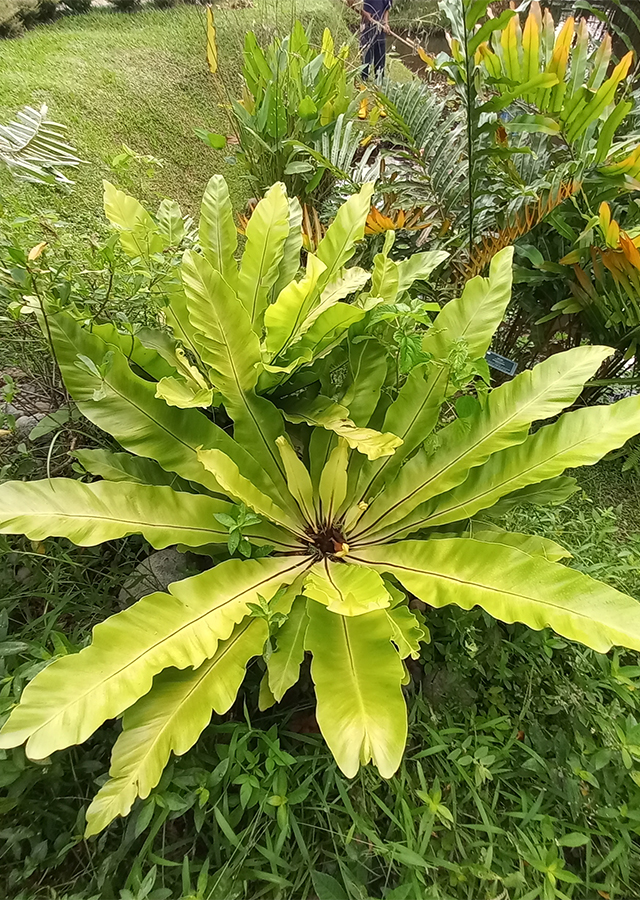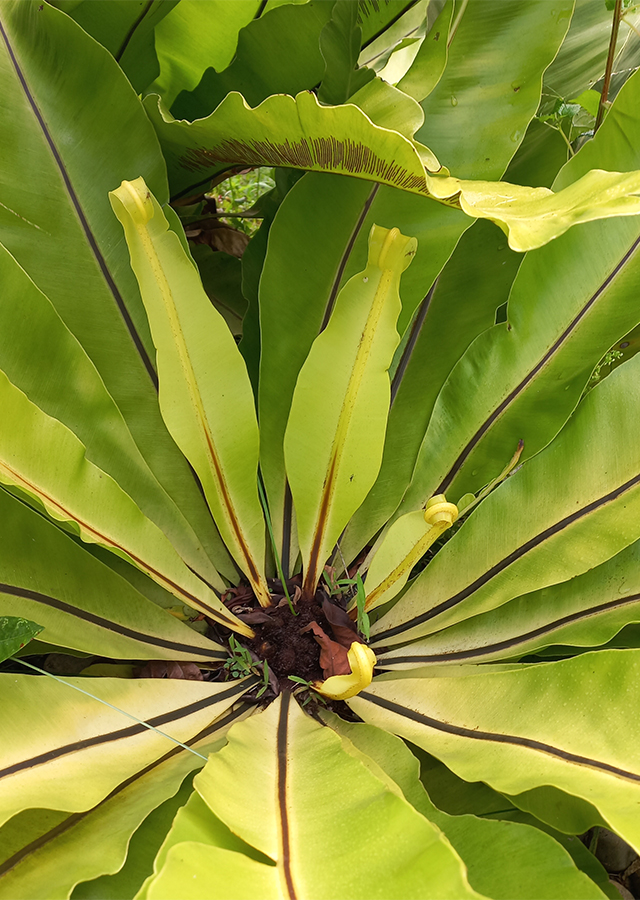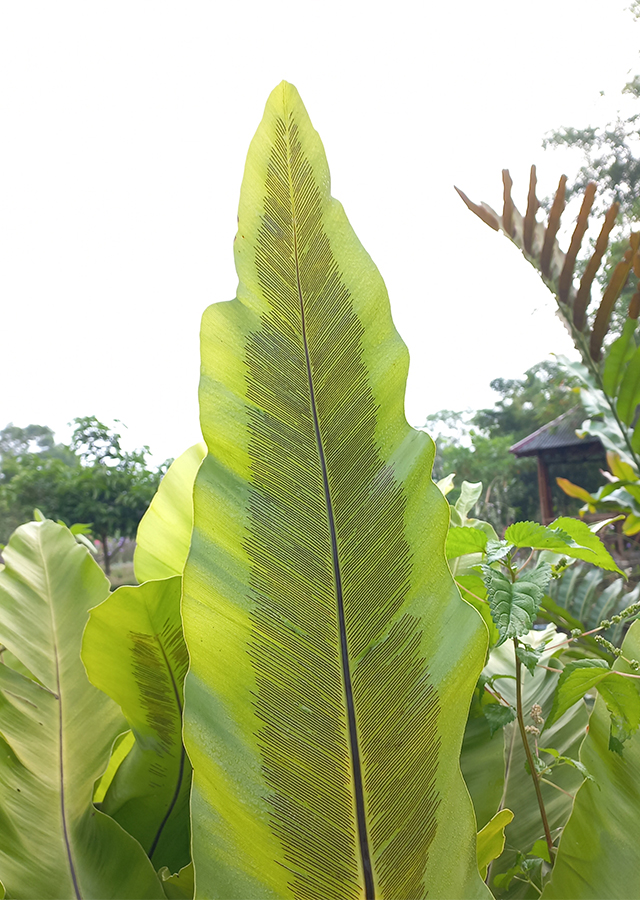Bird's Nest Fern
Asplenium nidus L.
Aspleniaceae
Location in our garden
Green House



Synonym
Asplenium ficifolium Goldm.
Neottopteris nidus (L.) J.Sm.
Thamnopteris nidus (L.) C.Presl
Habitus
Fern. A huge herbaceous epiphyte, often attain a large size, 40 to 120 cm long, 6 to 20 cm wide
Part Used
Shoots
Leaves
Roots
Growing Requirements
Need Shade
Habitat
Forest
Terrestrial
Overview
This fern is native of tropical Africa , Australia and tropical Asia. Asplenium nidus either grow terrestrially on the ground, or epiphytically on the trees. Sometimes they grow on rocks. Often used as ornamental plants.
Vernacular Names
Rumah langsuyar (Malay), Pakpak-lauin (Philippines), Shan su (Taiwanese), Chao jue (Chinese), Cay to chim (Vietnamese), I'gou (Papua New Guinea), Ekaha kuahiwi (Hawaiian).
Agroecology
Asplenium has adapted to a wide range of habitats. In the tropics it is often epiphytic or epipetric and particularly abundant in cloud forest of medium elevation. In temperate zones Asplenium ferns often grow epipetrically on acid or alkaline soils. This fern does not like direct sun, because of growing inside forests where it is shaded by high trees that do not allow the sun touch the fern directly. Prefer temperature of 16-24 °C.
Morphology
- Rhizomes - short, stout, erect or ascending, epiphytic, bearing a rosette of leaves at the apex (forming the nest) and below the leaves usually with a large mass of roots which bear copious, persistent, brown root hairs; apex of rhizome clothed with thin clathrate scales up to 2 cm × 3 mm, margins amply ciliate, black to purple-brown.
- Leaves - simple, pinnate or more finely dissected, mostly less then 1 m long; petiole often shiny black, grooved above, with 2 vascular strands at the base which unite upwards into a single 4-armed strand; lamina usually with grooved rachis and free veins. Sori usually rather long, along and on one side of the veins, protected by a narrow indusium, opening normally towards the midrib of the leaflet; sometimes double sori or sori of irregular orientation occur.
- Spores - irregular, thickened wing, translucent light brown when fresh, turning darker brown.
Cultivation
Asplenium normally propagates by spores. Many species, however, produce side crowns which can be separated. Separation of new plants is easiest in species with a creeping rhizome. A. nidus can also be propagated through in-vitro culture of rhizome segments and through planting out dissected leaf-bases (up to 13 per leaf) in vermiculite, each with a small portion of the rhizome attached.
Chemical Constituents
Alkaloids, tannins, oxalic acid, phenols, flavonoids (gliricidin7-O-hexoside, quercetin-7-O-rutinoside, kaempferol 3-gentiobioside-7,4'-diglucoside, kaempferol 3-vicianoside, kaempferol 3-O-glycoside, dan myricetin-3-O-rhamnoside).
Traditional Medicinal Uses
- Studies have suggested estrogenic, antibacterial, antioxidant, anticancer properties.
- Considered spasmolytic, estrogenic, depurative, sedative.
- The Malay used a decoction of leaves to ease labor pains; also, lotion from pounded leaves in water used as poultice to the head to relieve fever.
- In India, plant used for fever and urinary problems. Leaf paste applied to affected body parts for body pain. In North Eastern India, rootstock used against fever and elephantiasis. Also, used as emollient, in coughs and diseases of the chest. Leaf is smoked to treat colds.
- In Indonesia, minced leaves mixed with grated coconut used as hair shampoo. In Malaysia, cooling lotion made from leaves macerated in water applied to head for feverish conditions; similar preparation applied locally to ease labor pains.
- In Taiwan, used to treat fever; infusion used to alleviate labor pains, asthma, debility, halitosis, and sores.
Part Used
Reference Sources
- Stuartxchange. Philippines Medicinal Plant. (2019). Asplenium nidus. http://www.stuartxchange.org/Pakpak-Lauin.html. 30-09-21.
- Plant Resources of South-East Asia. Asplenium nidus. (https://uses.plantnet-project.org/en/Asplenium_(PROSEA). 30-09-21.
- Tropical Biodiversity. (2014). Asplenium nidus. https://blogs.reading.ac.uk/tropical-biodiversity/2014/01/asplenium-nidus-2/. 30-09-21.



